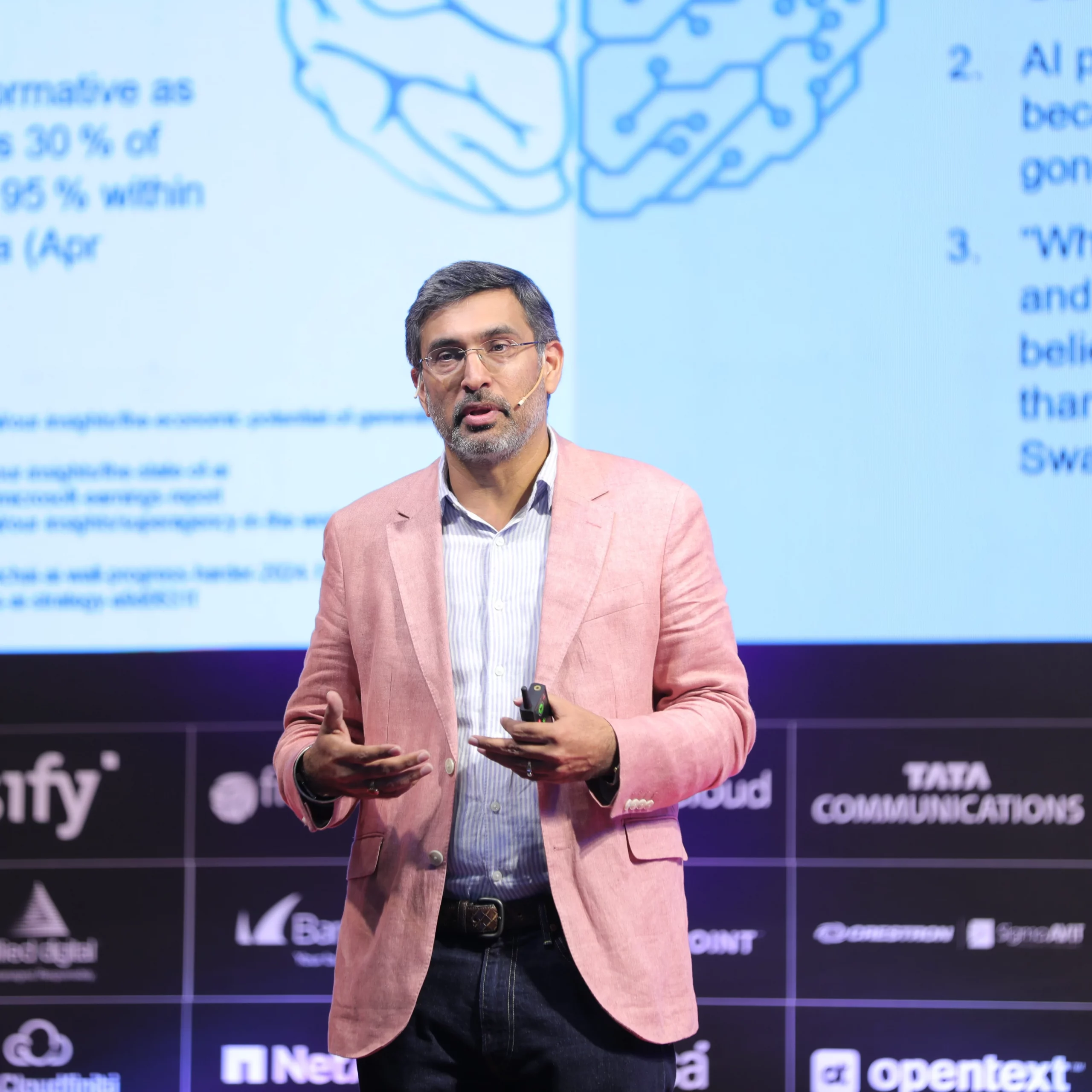At the recent 26th CIO&Leader Annual Conference, I delivered a candid reality check: while artificial intelligence is flooding boardrooms with excitement, hard evidence of its business impact remains scarce.

“We’ve talked about trillions of dollars of impact. Nobody has seen even a billion yet,” Bahl told the audience, stressing that the window to prove AI’s value is closing fast.
Excitement Meets Early Skepticism
I likened the current state of AI to the early days of digital transformation. Companies experimented aggressively, deploying dozens of tools, but struggled to prove their effectiveness. AI is following the same curve, only much faster.
Last year was all excitement. This year, skepticism is already creeping in and that is before we have realized any real business value. Unlike digital, which took years before doubts emerged, the AI hype cycle is already showing cracks.
The 10% Rule: Where Impact Lies
Most large enterprises can easily list 60 to 70 potential AI use cases. Yet only six or seven of them, around 10% are capable of delivering transformational business impact, such as raising EBITDA by 5% or more.
The rest are valuable tools, suitable for saving time or improving workflows, but are unlikely to have a significant impact on the financial bottom line. It is tempting to pursue the 90%, but unless we bet on the more challenging, high-impact use cases, we will not achieve the business impact that boards and investors expect.
Where AI Is Showing Promise
I highlighted functional areas already demonstrating measurable gains:
- Sales and Marketing: AI-driven lead generation and personalization delivering 3–4x better conversion rates.
- Customer Engagement: Smarter targeting and content creation driving 4–5x increases in interaction.
- R&D and Engineering: Faster time-to-market through simulation and data-driven testing.
- Customer Support: AI voice agents are reducing costs by up to 40% in India.
- Software Development: Code-generation tools cutting new development costs by 40–50%.
Adoption matters as much as technology. For example, AI-led lead qualification only works if sales teams commit to putting high-quality leads through the system, not low-priority ones.
Risks, Governance, and Talent
I also pointed to risks of bias, privacy, and hallucinations, noting that AI models often fail not at the edge cases but on the “happy path” in ordinary use. Rigorous testing and training must become new core capabilities.
There is also a talent gap. While data science skills are abundant, what is missing is strong product management, the ability to design AI solutions that truly align with business needs. We have given disproportionate importance to data science and not enough to product management.
The Call to Action
My closing message was direct: stop chasing breadth, and prove depth. If each company can deliver even one transformational case study by the end of the year, it will set benchmarks that the rest of the industry will follow.
AI’s future is less about the number of pilots and more about the ability to show business outcomes that boards, CFOs, and shareholders can measure.